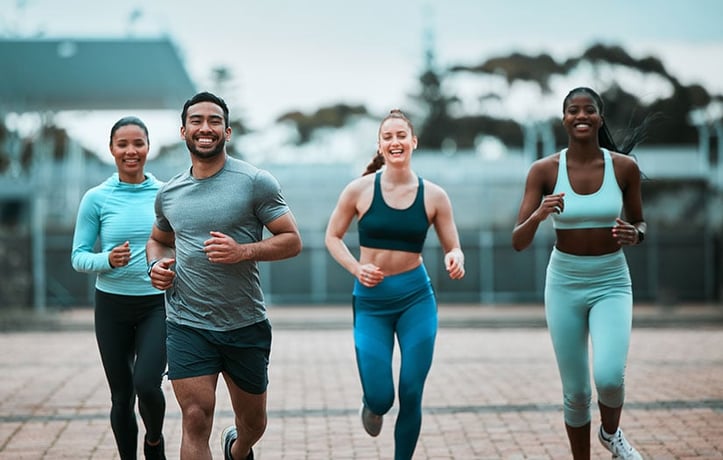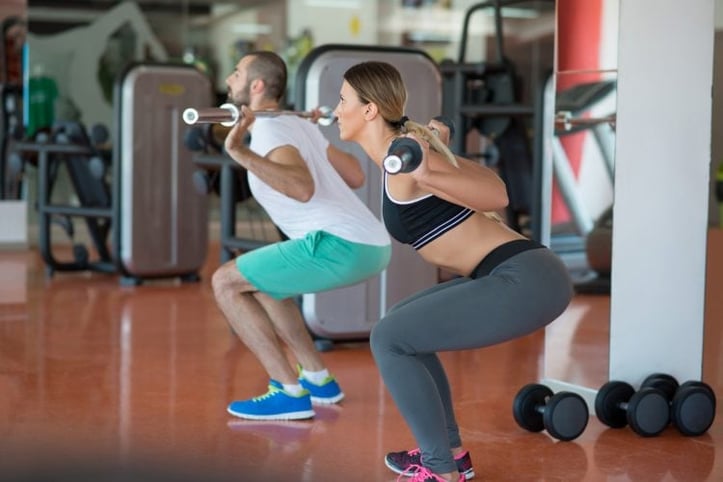您可能已经听到了“肌肉记忆”一词来描述记住运动的能力,或者可能描述了在不活动时期迅速恢复肌肉质量的能力。
当这个术语随随便便作为锻炼计划的营销工具时,可能会使您想知道:“肌肉记忆是什么吗?我的肌肉能记住我的锻炼吗?”
简短的答案:是的,肌肉记忆是真实的,但可能无法正常工作。
作为一个fitness trainer或爱好者,这个主题是一个重要的考虑。
什么是肌肉记忆?
Muscle memory describes the ability to regain muscle mass in previously trained muscles. This means that once you’ve gained muscle mass through strength training if you lose it after taking time off from training, you can regain the muscle mass faster than the amount of time that it took to put it on in the first place.
This is good news!
肌肉记忆如何工作?
肌肉记忆与您的肌肉细胞“记住”运动无关。随着肌肉的训练,随着肌肉质量的增加,肌肉纤维核或肌核的数量会增加。科学界仍然存在争论,介绍了肌核素数量增加所需的力量训练量。bob官方app
在Snijders等人的研究评论中。al。(2020),数据显示了肌肉纤维大小与人类肌核的数量之间的线性关系。这表明hypertrophy training,肌肉大小的增加会增加肌核。
The question that researchers are still debating is: What happens to the myonuclei during periods of inactivity? If you gain muscle mass, but then stop training, do you lose all the myonuclei that were gained during training?
Egner等人对动物进行的研究。(2013年)表明,在肌肉恢复到原始大小时,在超负荷肥大期间获得的肌核中不会损失。即使在此不活动期间的肌肉大小减少,肌核的数量却没有。这项研究似乎非常有前途,因为它表明,即使肌肉大小减少,由于保留了肌核的数量,因此仍然存在更快的肌肉再增长。
This is potentially good news for aging adults and those who may have had to take time off for training due to various reasons (like a pandemic, for example). There is some promising research in humans that suggests that myonuclei are retained after short-term physical inactivity and that rapid muscle re-gain is possible (Snijders et al., 2020). There is still a limited amount of research to fully support this view, however, so it is important to consider the current limitations of research.
Limitations of Muscle Memory
一段时间以来,人们假设人类肌核的增加可能是持久的甚至是永久的。目前,肌肉记忆持续的时间不确定。Snijders等人对肌肉记忆的研究综述。(2020年)发现,“科学界在人类骨骼肌中的肌核永久性中尚无共识,并使用适当设计的干预研究可以进行更多的研究。”
需要进一步的研究以对肌核的寿命达成更明确的共识,这些寿命通过训练和肌肉重长的影响而获得。bob官方app
It’s important to note that muscle memory is NOT the ability of the muscles to remember movements. The term muscle memory can be a bit of a misnomer because muscles don’t technically remember anything. In the brain, information is encoded, stored, and retrieved. What we perceive as the muscles “remembering” refers to motor learning that occurs in the central nervous system (CNS), not the muscles.
如果您从骑自行车骑行了几年,那么您可能会感到惊讶的是,经过几次颤抖的时刻,您就会骑车好像从未休假。您的大脑记得如何骑自行车,然后保持直立。
It is fair to say, however, that there is a neural component to muscle memory since someone who has performed an exercise before will do so more efficiently than someone who has not which may aid efforts to gain muscle mass.
How to Use the Concept of Muscle Memory for Hypertrophy
对于因假期,受伤或生活事件而不得不休息一下训练的任何人,肌肉记忆可能会改变游戏规则。bob官方app即使在肌肉记忆方面仍然存在一些辩论,我们仍然可以运用我们所知道的利用。
利用肌肉记忆时,有两个因素要考虑:
1.进行足够的训练来诱导肌肉肥大。bob官方app为了引起肌肉肥大的适应,必须以3-5套6-12次重复的练习量始终如一地训练(每周3-4次),持续4-6周。刚开始训练的人需要从一开始就需要达到这种强度和音量稳定耐力训练bob官方appandStrength Endurance training,总共需要8周才能完成。
2. Minimize periods of inactivity, if possible. The longer you rest, the more muscle atrophy takes place. Additionally, the less activity you do during that rest, the higher the rate of atrophy. Taking a week off from your normal workout routine will hardly dent your progress but lying still in bed for 3 weeks can lead to significant atrophy. If possible, stay as active as possible while taking a break from strength training to minimize muscle mass loss.
How Long Does It Take to Get Back Into Shape?
Staron等人进行了最早的抗药性训练中更快重新增长的研究之一。bob官方app在1991年。在这项研究中,与最初20周的力量训练相比,在重新培训6周期间,女性参与者恢复了肌肉力量和纤维大小。bob官方app
然而,似乎重新获得肌肉的速率可能会取决于训练失败期间发生的不活动水平(Snijders等,2020)。bob官方app如果您卧床不起一段时间抵抗训练bob官方appbut continue to do normal daily activities.
Consider this to be encouraging news if you, like many, took time off from training during the pandemic (or for any other reason!). There’s no time like the present to pick up those dumbbells again and remind those muscles how good it feels to lift. It might feel like you’re back at square one initially, but the gains will come back in no time.
References:
Egner, I. M., Bruusgaard, J. C., Eftestøl, E. and Gundersen, K. (2013). A cellular memory mechanism aids overload hypertrophy in muscle long after an episodic exposure to anabolic steroids. J. Physiol. 591, 6221-6230.https://doi.org/10.1113/jphysiol.2013.264457
Gundersen, K. (2016). Muscle memory and a new cellular model for muscle atrophy and hypertrophy. J Exp Biol, 219(2), 235-242.https://doi.org/10.1242/jeb.124495
Snijders, S. et al. (2020). The concept of skeletal muscle memory: Evidence from animal and human studies. Acta Physiol (Oxf), 229(3), e13465.https://doi.org/10.1111/apha.13465

















